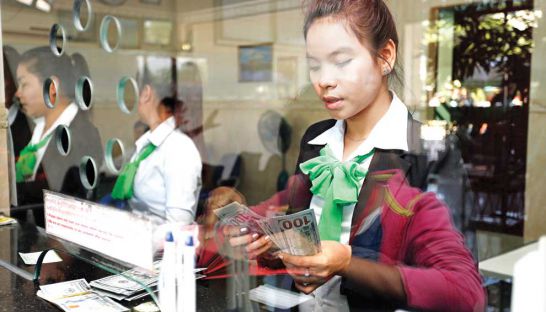MFIs predict lower earnings
MFIs predict lower earnings
With the interest rate cap of 18 percent in full force for all new and restructured microfinance loans after the National Bank of Cambodia (NBC) issued a populist measure to curb high interest rates, microfinance institutions (MFIs) are starting to give predictions for lower profits this year as the new lending reality takes hold.

The interest rate cap that came allegedly on the orders of Prime Minister Hun Sen himself and was hastily announced last month, requires MFIs to not lend above 18 percent as of April 1. While many in the sector warned of imminent collapse within an industry that holds a combined loan portfolio of $3 billion with a total of 1.9 million clients as of the end of 2016, MFIs are now starting to fully reassess their profitability numbers.
Kea Boran, CEO of AMK, said that while the financial institution showed healthy profits last year, reaching $6.6 million, an increase from a little over $5 million in 2015, this year would prove difficult to hold on to similar growth rates as the company restructures to cope with the NBC directive.
“From my current estimation, our profits this year will be cut in half as we receive lower returns on our loans,” he said, adding that the company’s total outstanding loan portfolio at the end of March reached $150 million with a client base of 335,000.
While AMK has maintained a return of equity (ROE) at about 20 percent annually for the last two years, according to its financial reports, Boran said there was no doubt that 2017 would show marketable declines as uncertainty prevails.
Analysts have warned that MFIs like AMK and VisionFund that provide the majority of their loans at $1,000 or under, would be hit the hardest by the 18 percent cap.
An executive from VisionFund Cambodia, that wished to remain anonymous out of fear of negative company image, said that the microfinance deposit-taking institution (MDI) anticipated that net profits would decline up to 60 percent this year despite the company introducing broad cost-cutting measures. VisionFund Cambodia had a net profit of $3.4 million in 2016, with an ROE at 11.7 percent.
As smaller MFIs brace themselves for the seasonal pick-up in lending that typically begins in May and lasts until July when rural farmers take out smaller loans for the planting season, even the Kingdom’s larger financial institutions are seeking ways to remain upbeat.
Chea Phalarin, CEO of Amret Microfinance Institution, said that despite the MDI determined to remain profitable this year, its bottom line would suffer.
“I think that we will still have profits, but not the huge profits that we have had over the last three years,” he said, adding that he would not speculate on what 2017 has in store besides noting that there would be a “able change in the numbers”.
“We have discussed with our shareholders and we think that [the interest rate cap] is not as serious of an issue for us as we already earn profits by lending at acceptable rates,” he said.
According to Amret’s 2016 financial report released yesterday, net profit reached $25.4 million, up 8 percent from $23.5 million in 2015. The report noted that the company had an outstanding loan portfolio of $557 million while holding $284 million in deposits.
Nevertheless, Phalarin added that despite strong performance the financial institution would cut operation costs and lower staff numbers while also adopting digital financial services, or fintech, in hopes of retaining high margins.
Stephen Higgins, managing partner of local investment firm Mekong Strategic Partners, said that while the interest rate cap would obviously have the largest impact on MFIs that handle small loan s, the Kingdom’s seven MDIs should remain profitable.
“For financial institutions that provide loans above $2,000, they will see little impact,” he said. “Loans below this amount, particularly those in riel, will see a significant impact, and MFIs are likely to pull back from lending to that part of the market.”













